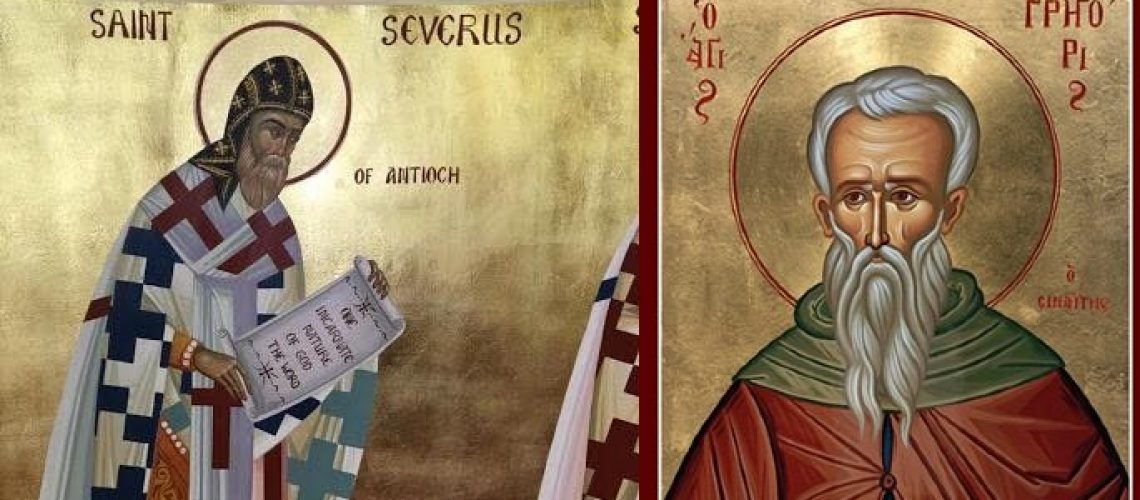In the sixth century, a man named Julian believed in the incorruptibility of the body of Christ. He taught that the body of Christ is incorruptible before, as well as after the resurrection. Gregory of Sinai, a Chalcedonian, and Severus of Antioch, a non-Chalcedonian, responded to him along the same lines.
Severus of Antioch
Severus of Antioch (a non-Chalcedonian saint) affirmed that there are various meanings for the word ” corruptible ” including sinful and changeable. As such, he made the following affirmations:
(1) Christ’s body was always incorruptible in the sense of sinlessness i.e. Christ never sinned.
(2) His body was corruptible inasmuch as He succumbed to innocent change such as growth from infancy to adulthood, hunger and thirst.
(3) After the resurrection, Christ’s body is to be considered immortal, impassible and incorruptible. Knowing that the Eucharist is the body and blood of the Risen Christ, it logically follows that it is incorruptible. However, since the bread and wine are substances of matter, they are corruptible (or changeable) as the presbyter can cut the bread and divide it among the congregants. This cannot occur using an incorruptible (=unchangeable) substance.
Gregory of Sinai
Likewise, Gregory of Sinai (a Chalcedonian saint) responded to Julian’s followers by challenging them to keep the sanctified gifts for days without preservation. If the sanctified gifts remain as is, then Julian’s doctrine is absolutely right. If not, however, then Gregory gives the following options:
(1) they they didn’t pray hard enough for the Spirit to come upon the gifts
(2) they partake not of the body and blood but merely a type
(3) the body of Christ was corruptible before the resurrection inasmuch as it was sacrificed, made to die, wounded, divided up and eaten as an incorrupt nature cannot be cut, eaten, touched and held.
Concluding Remarks
Both Severus and Gregory agreed on the body and blood of Christ communicating the divine life. Both agreed that the substance remains corruptible or changeable which makes the possibility of its taste and other properties changing feasible.
Sadly, Oriental Orthodox and Eastern Orthodox followers of Severus and Gregory respectively have succumbed to a Julian conception of the natural order.
Historically, the presanctified gifts have rotted and the fathers gave instructions to preserve the gifts from this. If the molecules of fungi and mold could grow on the bread and wine made into the body and blood of Christ, then who are we to affirm that it’s impossible for the molecules of a virus to remain on the Eucharist.
Note:
At the beginning of this controversy, I deemed it impossible for the spoon or Eucharist to retain any level of corruptibility due to my impulsive, foolish and false sense of piety. After reading what the fathers (Chalcedonian and non-Chalcedonian alike) said, I cannot help but admit that I was wrong and ask God that I may respect the limitations of substance as much as He does.

